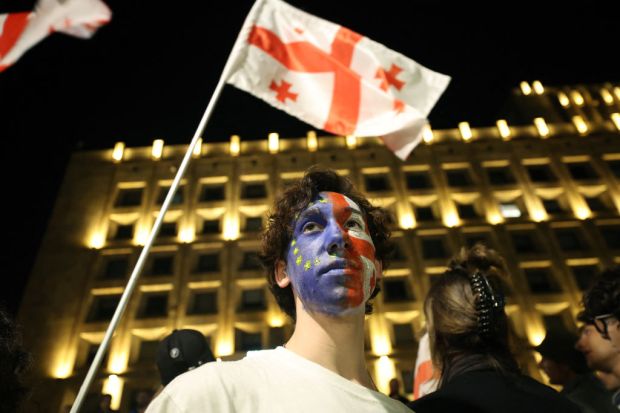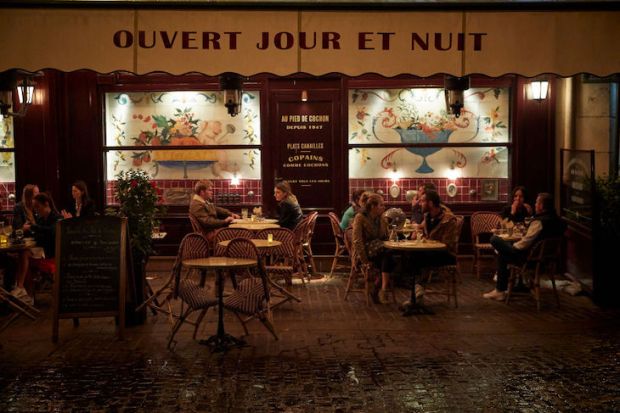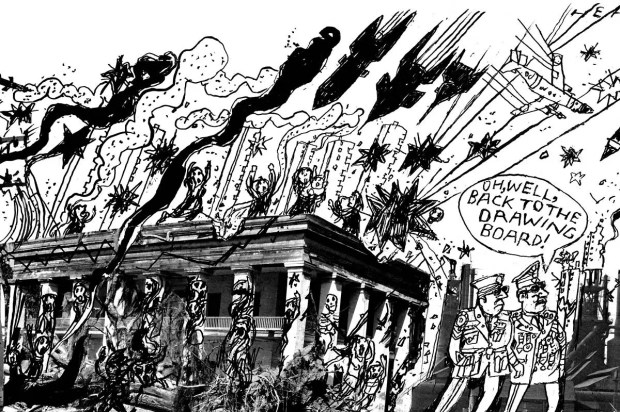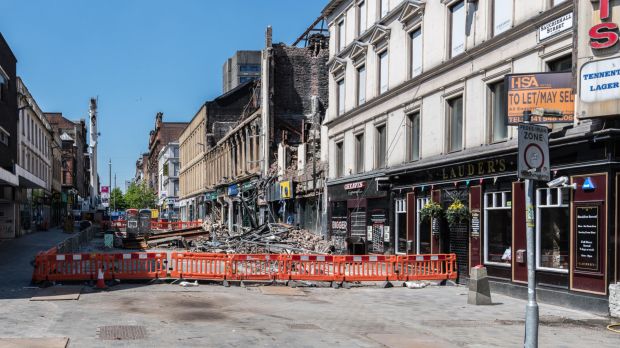Sotk, Armenia
A group of Armenian soldiers stand guard on the road towards the village. ‘It’s not safe to go ahead,’ one says, slinging his Kalashnikov across his shoulder and motioning for our van to pull over. ‘They were shelling the highway just 15 minutes ago.’ In the distance, there’s the unmistakable thunder of artillery and smoke rising from the side of the mountains. Beyond them is the border with Azerbaijan from where, in the early hours of Tuesday morning, a massive barrage was unleashed on towns and cities across Armenia.
The offensive is the most dramatic escalation since the two former Soviet republics fought a brutal and bloody war two years ago, leaving more than 5,000 dead on both sides. There are fears of a return to full-scale fighting. Azerbaijan insists it is simply responding to being under attack. ‘All responsibility for the current provocations lay with the political-military leadership of Armenia,’ Layla Abdullayeva, the spokeswoman for the Azerbaijani Ministry of Foreign Affairs tells me.
Those words feel familiar. In 2020, Azerbaijani troops began rolling into the disputed province of Nagorno-Karabakh, inside its internationally-recognised borders, controlled since the fall of the USSR by its ethnic Armenian majority as the breakaway, Yerevan-backed Republic of Artsakh. Initially, Azerbaijan insisted it was acting in self-defence. A few months later, Baku’s authoritarian president, Ilham Aliyev, admitted that ‘we started the War of Salvation’ in order to ‘liberate our native lands from occupiers.’ Outgunned and still reeling from having lost swaths of territory during that conflict, it’s unclear why Armenia would start another one.
Artush, a 42-year-old Armenian, owns a shop on the side of the road to the village. He’s one of the few who hasn’t been evacuated from this part of the border region and is doing a roaring trade selling cold drinks to the soldiers stationed here in the scorching heat. ‘Even during the war it wasn’t this bad,’ he says, looking out at the plume of black smoke on the horizon. ‘I don’t know what we did to deserve this.’
A radio buzzes and we get the go-ahead to proceed. In the van, the local TV crew I’m travelling with whip out their cameras, filming the aftermath of the shelling from the window as our driver races us down the highway. In the village, rows of houses stand empty, the families who called them home having been ordered to leave. Only the artillery in the distance and the occasional bark of a left-behind dog breaks the silence.

The side of one wood-framed farmhouse had been blown off. A shell exploded next to the apple tree just outside, sending apples flying. Rows of children’s toys are lined up in the hall, vases shattered. In the garden of another home, a flock of maybe three dozen sheep scour the ground for food. For Armenians in rural farming villages, a flock like this would be their livelihood; having to abandon them would throw a whole family into financial turmoil.
I take off my helmet to cool down and put it on a bench. It’s 32°C and we’re all sweltering in heavy flak jackets. A moment later, someone shouts in Armenian. The camera crew starts running. The shell whistles over and hits the hill behind us. Then another comes in.
Azerbaijan insists it is only targeting military installations but it accuses Armenia of concealing its soldiers and hardware in civilian areas, among schools and hospitals. While the conflict is now playing out on Armenian soil, most analysts agree it’s designed to force an endgame in Nagorno-Karabakh, 50 miles over the border from the village, and give Azerbaijan control of the last remaining areas inhabited by Armenians.
Under the terms of the 2020 Moscow-brokered ceasefire, Azerbaijan regained a stretch of land the size of Jamaica, used mostly as a mine-strewn ‘buffer zone.’ Russian peacekeepers were deployed as part of the deal to guard the contact line in Nagorno-Karabakh, protecting the remaining areas under Armenian control. However, Azerbaijan has repeatedly pushed past the peacekeepers, violating the ceasefire and calling on local Armenian militias to lay down their arms. Locals accuse Moscow’s forces of sitting in their outposts, refusing to turn back the Azerbaijanis.

Massive protests broke out in Yerevan on Wednesday night amid reports that the Armenian Prime Minister could be poised to sign an agreement recognising Nagorno-Karabakh as Azerbaijani territory. ‘We might be losing the war, but we will definitely have lost if we sell out Artsakh,’ says one young demonstrator. In an effort to calm tensions at home, the Armenian Prime Minister released a video saying that ‘no document has been signed, and no document will be signed.’ But with reports that Azerbaijani land forces are marching in en masse, it’s unclear what other options are available to him.
Armenia is supposedly a Russian ally. It is also a member of the post-Soviet military alliance, the Collective Security Treaty Organization. However, its calls for an armed intervention have fallen on deaf ears, with the Kremlin distracted by its catastrophic war in Ukraine and member states like Kazakhstan, which are close partners of Azerbaijan, saying they would veto troop deployments.
On paper, Armenia is the most robust democracy in the region, while Azerbaijan consistently is one of the worst global performers for civil rights and press freedom. Azerbaijan has been governed by a father and son presidential dynasty since independence. Meanwhile, with Brussels looking to tap into its vast oil and gas reserves to replace Russian exports, the EU has declared Azerbaijan a ‘reliable’ partner.
‘I don’t know what happens next,’ says Artush, the roadside shop owner. ‘It feels like we are alone.’
Got something to add? Join the discussion and comment below.
Get 10 issues for just $10
Subscribe to The Spectator Australia today for the next 10 magazine issues, plus full online access, for just $10.


















Comments
Don't miss out
Join the conversation with other Spectator Australia readers. Subscribe to leave a comment.
SUBSCRIBEAlready a subscriber? Log in